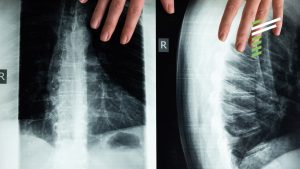At a Glance
This case study outlines how Brazilian terminal operator addressed operational inefficiencies in its cargo terminal by implementing a digital transformation. The project involved integrating fragmented data sources, automating manual processes, and enhancing security to improve reporting accuracy, reduce delays, and minimise operational risks.
Renoir’s partnership client developed a plan to replace infrastructure with digital solutions, mapping existing systems and workflows.
Key results
- Identified operational impacts exceeding $5 million annually due to outdated systems
- Mapped 198 tables and 3,608 fields to create a unified data model.
- Developed a security analysis to enhance infrastructure resilience.
- Created real-time dashboards, reducing data consolidation time from three weeks to instant availability.
- Established an integration roadmap to ensure seamless system interoperability.
Background
Synchronising many interdependent activities is an essential part of airport operations. These activities include air traffic control, ground handling, baggage processing, security checks and passenger services. Effective coordination is essential to minimise delays and ensure the smooth flow of aircraft and passengers.
The client is a well-known airport situated in a region that is renowned for its technological infrastructure and strategic economic importance in Brazil. Acting as a key gateway for international trade, the client faces the complex challenge of managing high-volume cargo operations while simultaneously upholding efficiency, stringent security standards, and regulatory compliance.

Management system drives efficiency and contractor compliance

Vendor management saves healthcare centre $12 million

Reduce Operating Costs with Optimized Performance Management

Vendor management saves healthcare centre $12 million
Ready for a change in your organisation?
“The proposed system architecture was truly designed to minimize the effects that cause interruptions in our process, ensuring even the systemic freedom to modify the solution as our processes improve in a practical way.”
– Chief Executive Officer
Analysis
The client’s cargo terminal was operating with legacy software systems and spreadsheets, resulting in data fragmentation, slow reporting, and increased operational risks. Reporting delays extended up to five days, and inconsistent KPIs impeded effective decision-making. Security vulnerabilities in the IT infrastructure posed risks to data integrity and compliance. Without action, these issues were projected to have an operational impact exceeding USD 5 million annually.
A comprehensive assessment revealed:
- Crucial business processes were heavily dependent on outdated spreadsheets and disparate software platforms.
- The lack of integration, particularly between critical systems such as VIADAT and CORESYS, resulted in data inconsistencies, complicating effective decision-making.
- The dependence on manual methods also caused significant delays, with key reports taking up to five days to generate.
Project Approach
Project Approach Renoir collaborated with the client to devise a transformation roadmap structured around four strategic pillars:
- Data Integration: Designing a unified data model, mapping 198 tables and 3,608 fields to standardise information across platforms.
- Security Enhancement: Conducting a detailed security audit to identify vulnerabilities and recommend infrastructure improvements.
- Process Automation: Replacing legacy manual systems through Business Process Mapping (BPMN) and automated workflows.
- User-Centric Prototyping: Developing wireframes and UI prototypes for key applications, including a real-time cargo tracking system.
A structured SIPOC-based methodology was applied during the requirement-gathering phase, incorporating extensive stakeholder interviews to capture operational pain points comprehensively.
This rigorous groundwork enabled our team to design an architecture specifically tailored to the client’s needs, aiming to replace manual processes with automated, integrated solutions that would ensure real-time visibility and control over operations. This phased implementation plan was devised to ensure a seamless transition, minimise operational disruptions, and effectively train staff on the new digital tools.
“Certainly, a model tailored to our needs, with the main characteristic being the use of open-source software for the development of the main applications.”
– Chief Finance Officer
“The proposed configuration after the digital transformation project mapped the entire end-to-end process, identified the main gaps, and involved the entire coordination team in the critique of the current model.”
– Commercial Director
Implementation
Project execution began with a focus on data structuring and integration planning, specifically targeting key pain points in cargo terminal management, reporting, and security compliance.
Key initiatives undertaken included:
Data Consolidation: Standardising data across multiple platforms to eliminate redundancy. An integrated database model combining relational (RDBMS) and NoSQL approaches was established for performance optimisation. Both structured and unstructured data were integrated to support potential future predictive analytics.
Security & Compliance Enhancements: Conducting an extensive cybersecurity assessment resulting in a security infrastructure report. Access control models and encryption strategies were designed to protect sensitive data. Blockchain-based security protocols were implemented to enhance compliance with international logistics regulations.
Process Automation & Digital Interface Development: Automating processes such as customs clearance, cargo tracking, and financial reporting. An API-based integration model was developed to facilitate seamless data exchange between internal systems (like VIADAT and CORESYS) and external systems. A real-time dashboard for operational KPIs was created, drastically reducing the time needed for manual data consolidation. Prototypes were designed and tested for a customer-facing portal intended to provide transparency in cargo movement.
Operational Training & Change Management: Workshops were conducted with logistics operators to align teams on the digital adoption strategies. An onboarding program was implemented to ensure a seamless transition for employees to using the new technologies.
Results
The collaboration between Renoir and the client yielded substantial improvements in operational efficiency and digital maturity. Real-time KPI dashboards eliminated historical reporting delays, enabling proactive decision-making. The unified data model ensured consistent and accurate data across platforms, while automation significantly reduced the manual workload for staff.
Cargo tracking accuracy improved, reducing operational errors and enhancing transparency for both internal and external stakeholders. Security upgrades reinforced the airport’s compliance with international standards and boosted trust across its logistics network. Through this transformation, the client emerged as a digital leader in the Brazilian airport logistics sector.
*We have intentionally omitted client-specific details to maintain strict confidentiality.
Is your operation burdened by legacy systems, fragmented data, and manual processes?










